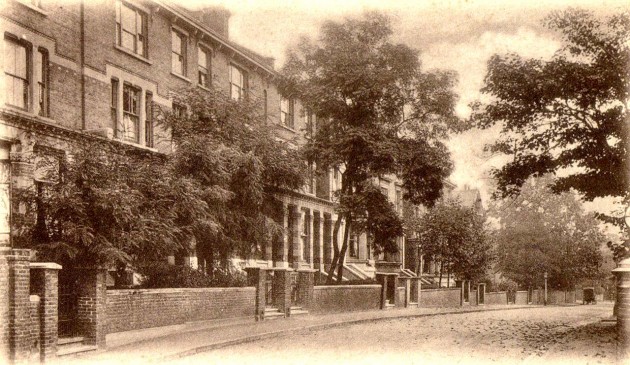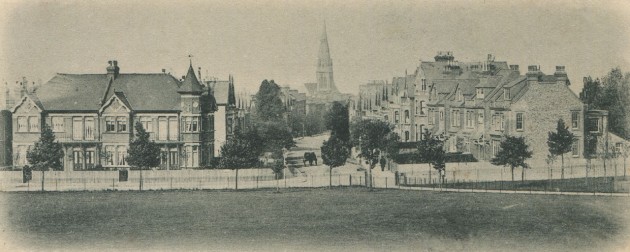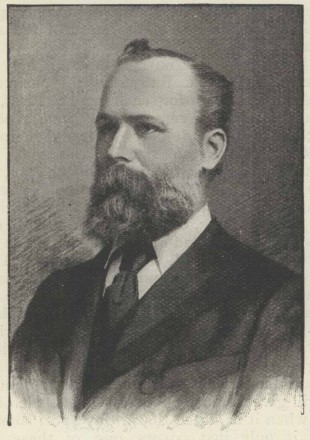…where east meets west
- Home
- Brief History
- The Greenwich Meridian
- Greenwich
(1675–1958) - Herstmonceux
(1948–1990) - Cambridge
(1990–1998) - Outstations (1822–1971)…
- – Chingford (1822–1924)
- – Deal
(1864–1927) - – Abinger
(1923–1957) - – Bristol & Bradford on Avon
(1939–1948) - – Bath
(1939–1949) - – Hartland
(1955–1967) - – Cape of Good Hope
(1959–1971)
- Administration…
- – Funding
- – Governance
- – Inventories
- – Pay
- – Regulations
- – Royal Warrants
- Contemporary Accounts
- People
- Publications
- Science
- Technology
- Telescopes
- Chronometers
- Clocks & Time
- Board of Longitude
- Libraries & Archives
- Visit
- Search
People: E Walter Maunder
| Name | Maunder, Edward Walter |
||
| Place of work | Greenwich | ||
| Employment dates |
6 Nov 1873 – Nov 1913 | ||
| Jan 1916 – 30 Sep 1919 (volunteer to start with then temporarily reinstated into his former post on 1 April 1916) |
|||
| Posts | 1873, Nov 6 |
Second Class Assistant | |
| 1884 | First Class Assistant | ||
| |
1896 |
Assistant (following a regrading exercise and the abolition of the post of First Class Assistant) |
|
| Born | 1851, Apr | ||
| Died | 1828, Mar 21 | ||
| Family links | Married Annie Russell (Computer) in 1895 | ||
| Known Addresses | 1872 | 10 Crooms Hill Grove |
|
| 1875 |
4 Vansittart Terrace, Greenwich Road* | ||
| 1879–1882 | 3 Woodlands Road (now with a shop front and known as 15 Delacourt Road | ||
| 1885–1887 | Hyde House, (63) Royal Hill | ||
| 1887–1895 | Hyde House, (20) Ulundi Road | ||
| 1896–1900 | 18 Walerand Road, Lewisham | ||
| 1900–1906 | 86 Tyrwhitt Road, Brockley | ||
| 1908–1911 | 69 Tyrwhitt Road, Brockley | ||
| 1911 | 38 Crooms Hill | ||
| 1913–1926 | 8 Maze Hill (now 38 Maze Hill) | ||
*Vansittart Terrace was a row of 8 houses numbered from east to west. They were renumbered as 143-157 Greenwich Road in 1875 and destroyed by a flying bomb on 12 July 1944. Greenwich Road was renamed Greenwich High Road in the 1930s
Maunder is one of the best known of the Assistants at Greenwich, partly as a result of his work in the solar department, (in particular for his study of sunspots) and partly as a result of a series of articles he wrote for The Leisure Hour, which were later repackaged into his book The Royal Observatory Greenwich a glance at its history and its work (Religious Tract Society, London, 1900). The latter contains unjustified criticisms of John Pond that although they do not appear to be founded in fact, have subsequently become deeply embedded in the literature. Amongst the other myths he propogated was one about the Shepherd Regulator (Shepherd Master Clock) and another about the Prime Meridian. Having said that, it was Maunder who helped debunk the myth that there were canals on Mars.
Maunder was the second person in what became an elite group of individuals to be appointed as a Second Class Assistant, a grade a grade that was created in 1871 and abolished in 1896. Following changes to the appointment process in 1872 all the posts at this level were filled by competitive examinations organised by the Civil Service. In total, just eight individuals were appointed under this system. All were well educated, and generally in their 20s when they arrived at the Observatory. They were:
1873 Arthur Matthew Weld Downing
1873 Edward Walter Maunder
1875 William Grasett Thackeray
1881 Thomas Lewis
1881 Henry Park Hollis
1891 Andrew Claude de la Cherois
Crommelin
1892 Walter William Bryant
1892 Thomas Charlton Hudson
Apart from Hudson (who left the year after he was appointed), Downing who went to the Almanac Office and Bryant (who died in service), all stayed at the Observatory until they retired, each being promoted and put in charge of a particular section of the Observatory. From the first, Maunder was put in charge of what became known as the solar department, devoting himself to spectroscopic work using visual methods on the Great Equatorial and from 1874, capturing daily photographs of the Sun with one of the Observatory’s photoheliographs. He also went on numerous solar eclipse expeditions and went to observe the Transit of Venus in 1874 in Egypt with Downing and Criswick. Maunder served under three Astronomers Royal: Airy, Christie and Dyson. He retired in 1913, but returned as an assistant from 1916–19 to provide cover while many of the staff were engaged on other duties during the war.
Maunder became an editor of The Observatory in 1881 and its sole editor in 1883. He was also a key player in the setting up of The British Astronomical Association. He became a fellow of the Royal Astronomical Society in 1875. Nominated for several years in a row for Felowship in the Royal Society, he was nevertheless turned down, having been successfully opposed on each ocassion by William Huggins. (Becker: Unravelling Starlight p.320.)
Maunder was twice married. In 1875 he married Edith Bustin with whom he had six children, one of whom died in at the age of three in 1885. Edith herself died in 1888 a month after the birth of her sixth child, Henry. The 1891 census records the presence in Maunder’s household of two of his sisters, (both of whom are recorded as retired schoolmistresses), which suggests that together they helped him though the very difficult period after his bereavement.
On 28 December 1895 Maunder married Annie Russell, who was 17 years his junior and who had been appointed to the staff at Greenwich as a Lady Computer in 1890. Not only did she take on Maunder’s five surviving children, but she also had to resign from her post at the Observatory as the rules of the Civil Service then required. Despite this, she still managed to have a successful career as an astronomer.
Maunder moved house more times than any of the other Assistants, having lived in at least ten different properties in the locality. Between 1887 and 1895 he lived in a newly built house, Hyde House, in Ulundi Road on the east side of Greenwich Park in close proximity to several of the other Greenwich Assistants, Lewis, Hollis and Crommelin, who all lived in the same road. Following his marriage to Annie Russell, he moved about as far away as possible (given the need to be close to his work) to Walerand Road on the Lewisham side of Blackheath well away from the homes of any other staff member, eventually returning with Annie to the vicinity of Greenwich Park in about 1911.

Following his marriage to Annie Russell, Maunder moved into a terrace in Walerand Road, just off Lewisham Hill. His house (No. 18) was entered by the gate on the left. From a postcard (No. 907) published by Perkins Son & Venimore in about 1904

This view looking north along Tyrwhitt Road from Hilly Fields towards St John's Church would have been very familiar to the Maunders, who lived in the road from 1900–11. Hilly Fields, which is in Brockley, features prominently in their book The Heavens and their Story. The spire of the church, which was located in Lewisham High Road (now Lewisham Way) was used as an azimuth mark for Airy's Altazimuth Telescope from 1888 onwards. From a postcard published by Perkins Son & Venimore in about 1903
Obituaries and further reading
Obituary by A.C.D Crommelin, from The Observatory, Vol. 51, p. 157-159 (1928)
Edward Walter Maunder FRAS (1851-1928): his life and times. Kinder, A. J. Journal of the British Astronomical Association, vol.118, no.1, p.21– 42
© 2014 – 2025 Graham Dolan
Except where indicated, all text and images are the copyright of Graham Dolan
